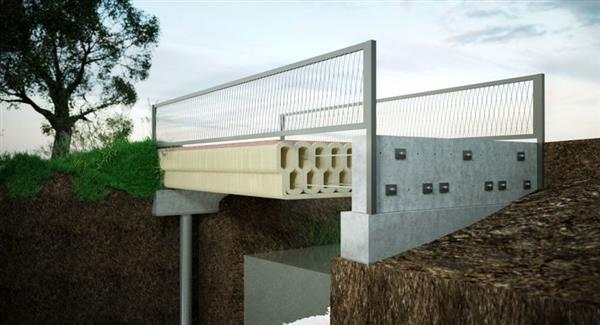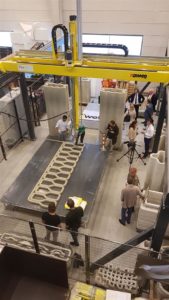Eindhoven University of Technology (TU Eindhoven – Netherlands), in collaboration with the Royal BAM Group (a Dutch construction company), launched the project to build a 8 metres 3D printed bicycle bridge in Gemert, near Eindhoven.

According to the university staff and BAM employees involved in the project, the concrete bridge should be 3D printed in several parts (eight sections of a metre) using a special concrete mortar before being implemented. The 3D printed sections will be placed between two bridgeheads and secured with strong cables.
 For Marinus Schimmel, manager of the Royal BAM Group, [with 3D printing, you have more flexibility in the shape of the product. The 3D printing for the construction of this bridge is also incredibly efficient because we need less concrete and there is no need for formwork where the concrete is well spread. This produces much smaller quantities of wastes, therefore implies the use of limited resources. In addition, this approach has a positive effect on the amount of CO2 emitted during the bridge production.]
For Marinus Schimmel, manager of the Royal BAM Group, [with 3D printing, you have more flexibility in the shape of the product. The 3D printing for the construction of this bridge is also incredibly efficient because we need less concrete and there is no need for formwork where the concrete is well spread. This produces much smaller quantities of wastes, therefore implies the use of limited resources. In addition, this approach has a positive effect on the amount of CO2 emitted during the bridge production.]
Although this 3D printed bridge is precast, developers are considering future scenarios in which the bridge will be 3D printed on-site. It will reduce the construction process, and eliminate the need to assemble parts after printing.
3D printing on-site printing is the ultimate goal for a wide range of companies of this sector. Obviously, one can expect new innovations of 3D printing in the construction sector.
The new 3D printed bridge will connect two existing routes in Gemert, N605 and N272.
//pagead2.googlesyndication.com/pagead/js/adsbygoogle.js
(adsbygoogle = window.adsbygoogle || []).push({});





